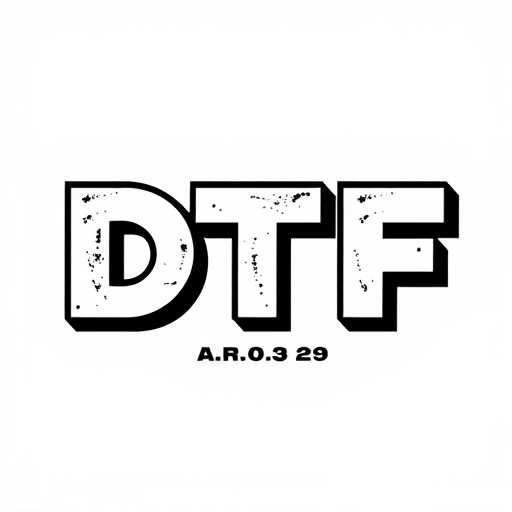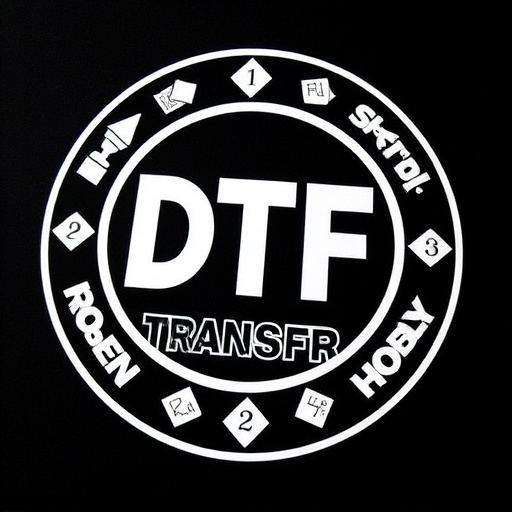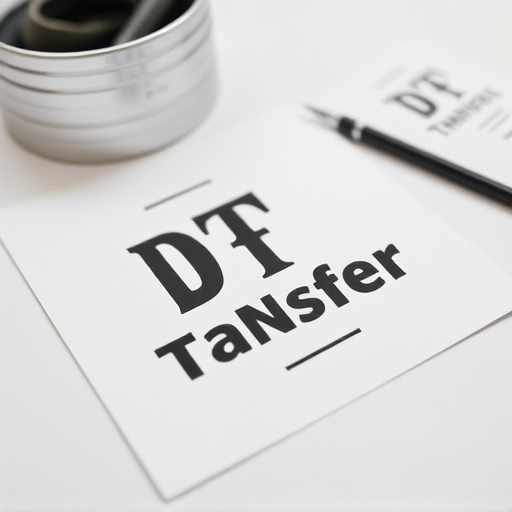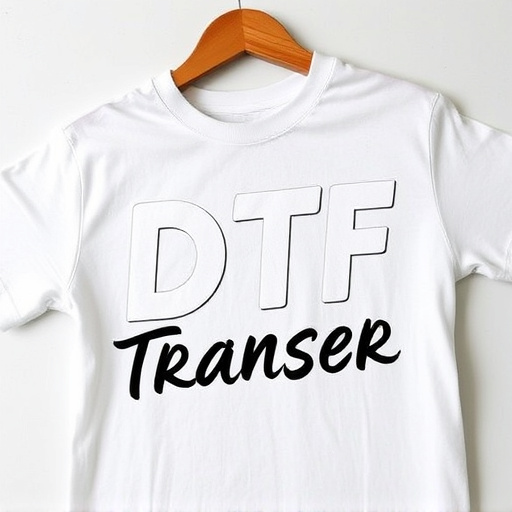Direct-to-fabric (DTF) transfer printing is a revolutionary method for creating vibrant, durable prints on synthetic fabrics. Key to its success is material compatibility, with synthetic options like polyester and nylon ideal due to their smooth surfaces and low absorbency. Proper ink selection, surface preparation, printing techniques, and post-processing are vital for achieving long-lasting DTF prints. Best practices include using suitable fabrics, pre-treating, regular care, and protective coatings to preserve the aesthetic appeal and longevity of DTF transfers.
In the realm of synthetic fabric applications, understanding DTF transfer is paramount. This innovative printing technique, pivotal for achieving high-quality designs on a variety of synthetics, requires meticulous consideration of material compatibility. From substrate selection to addressing adhesion and durability challenges, this article delves into the intricacies of DTF printing. We explore best practices to ensure longevity and visual appeal, providing valuable insights for professionals navigating this dynamic landscape. Uncover the secrets to mastering DTF transfer and its role in revolutionizing synthetic fabric design.
- Understanding DTF Transfer and Its Role in Synthetic Fabric Printing
- Material Compatibility: The Key to High-Quality DTF Prints
- Choosing the Right Substrates for DTF Transfer Applications
- Factors Affecting Adhesion and Durability of DTF Prints on Synthetics
- Common Challenges and Solutions in DTF Printing for Synthetic Fabrics
- Best Practices for Ensuring Longevity and Visual Appeal of DTF Transfers
Understanding DTF Transfer and Its Role in Synthetic Fabric Printing

Direct-to-fabric (DTF) transfer is a revolutionary printing technique that has transformed synthetic fabric applications. This method involves transferring ink directly onto the fabric’s surface, allowing for vibrant and durable DTF prints. Unlike traditional printing methods, DTF offers a direct bond between the ink and fabric, ensuring exceptional color fastness and washability.
In the context of synthetic fabrics, DTF transfer has become a game-changer due to its ability to produce high-quality DTF transfers with intricate designs. This process is particularly advantageous for creating personalized textiles, promotional merchandise, and even fashion items. By leveraging DTF printing, manufacturers can achieve precise color reproduction, ensuring that the final DTF prints meet the desired aesthetic and performance standards.
Material Compatibility: The Key to High-Quality DTF Prints

Compatibility between materials is a critical factor in achieving high-quality DTF (Direct to Fabric) transfers and prints. When selecting fabrics for DTF applications, it’s essential to consider the material’s composition, texture, and porosity to ensure optimal results. Different fabrics have unique properties that can impact ink adhesion and overall print quality. For instance, synthetic fabrics like polyester and nylon are popular choices due to their durability and easy care, but they may require specific DTF inks designed for their smooth surfaces to avoid poor ink transfer or blurring.
Natural fibers such as cotton offer a different experience; they can absorb inks more readily but might be prone to fading or shrinkage if not pre-treated properly. The key is to match the fabric’s characteristics with the intended print method and design. Understanding material compatibility allows designers and manufacturers to make informed decisions, ensuring that DTF prints are vibrant, long-lasting, and meet the desired aesthetic standards.
Choosing the Right Substrates for DTF Transfer Applications

When it comes to DTF (Direct-to-Fabric) transfer applications, selecting the ideal substrates is a key step for achieving high-quality DTF prints. The choice of substrate depends on various factors, including the desired print outcome, fabric type, and end use. For example, synthetic fabrics like polyester, nylon, and acrylic offer excellent compatibility with DTF technology due to their smooth surface and low absorbency, ensuring crisp and vibrant DTF prints.
Opting for suitable substrates ensures that the intricate details of the design are accurately transferred, making the final product visually appealing. Additionally, considering factors such as fabric weight and stretch can prevent potential issues like print smudging or peeling during the transfer process. Therefore, understanding substrate compatibility is essential for professionals in the textile industry using DTF printing techniques to produce durable and aesthetically pleasing fabrics.
Factors Affecting Adhesion and Durability of DTF Prints on Synthetics

The adhesion and durability of Direct to Fabric (DTF) prints on synthetic materials are influenced by several key factors. One of the primary considerations is the selection of appropriate inks and substrates. Different types of synthetics, such as polyester or nylon, may require specific ink formulations to ensure optimal bonding. The surface preparation of the fabric is crucial; proper cleaning and treatment can enhance adhesion by removing impurities and creating a more receptive surface for the DTF transfer.
Furthermore, application techniques play a significant role in the print’s longevity. Even with high-quality inks and materials, improper printing pressure or speed might lead to weaker bonds. Heat setting and curing processes are essential to solidify the inks, and variations in these parameters can impact durability. Additionally, environmental factors like exposure to sunlight, moisture, and friction over time can affect the integrity of DTF prints on synthetics, necessitating the use of protective coatings or finishes for enhanced longevity.
Common Challenges and Solutions in DTF Printing for Synthetic Fabrics

In the realm of synthetic fabric applications, Direct-to-Fabric (DTF) Printing presents both exciting opportunities and common challenges. One of the primary hurdles is achieving optimal adhesion on various synthetic surfaces, as different fabrics have unique properties that can affect ink bonding. For instance, polyester and nylon, while durable, may require specific pre-treatment to ensure a secure DTF Transfer.
Solutions involve careful selection of inks compatible with synthetic fibers and implementing suitable surface preparation techniques. Pre-conditioning the fabric, such as cleaning or applying primers, can enhance adhesion. Additionally, adjusting printing parameters like temperature and pressure can significantly impact the quality of DTF Prints, ensuring vibrant and long-lasting designs on these materials.
Best Practices for Ensuring Longevity and Visual Appeal of DTF Transfers

To ensure the longevity and visual appeal of DTF (Direct to Fabric) transfers, several best practices should be followed. Firstly, use high-quality fabrics suitable for DTF printing; cotton and polyester blends often work best. This guarantees a smooth surface for printing, enhancing the final product’s clarity and vibrancy. Additionally, pre-treating the fabric with appropriate release agents ensures ink doesn’t adhere where it shouldn’t, preserving the design’s intricate details.
Regular care is vital to maintaining DTF prints. Avoid harsh detergents or direct sunlight exposure, which can fade colors and weaken the fabric. Instead, opt for mild cleaning methods and consider using UV protective coatings on finished products. Proper storage in a cool, dry place further prevents deterioration. Remember, these precautions aren’t just about aesthetics; they extend the lifespan of your DTF transfers, making them a more sustainable choice.














